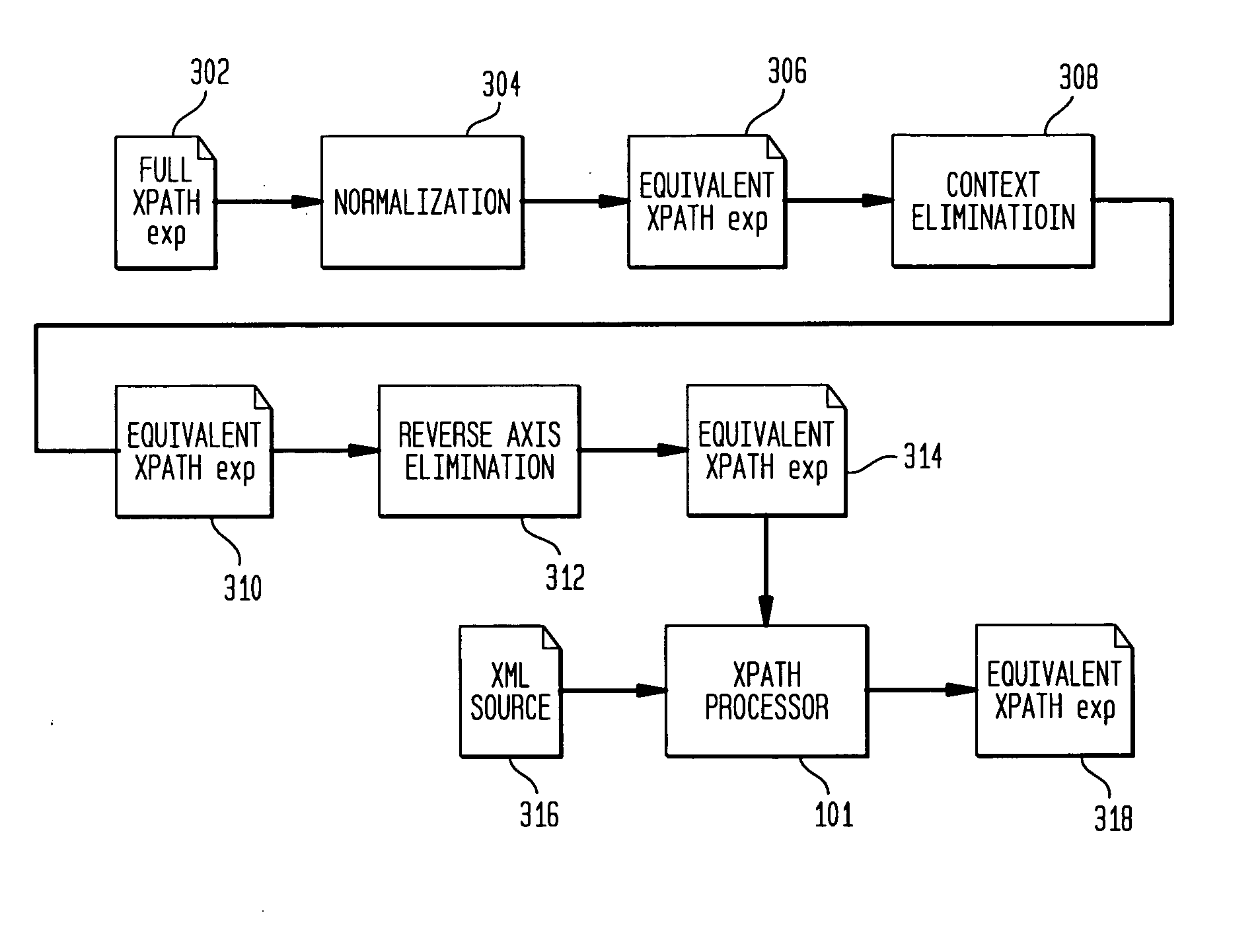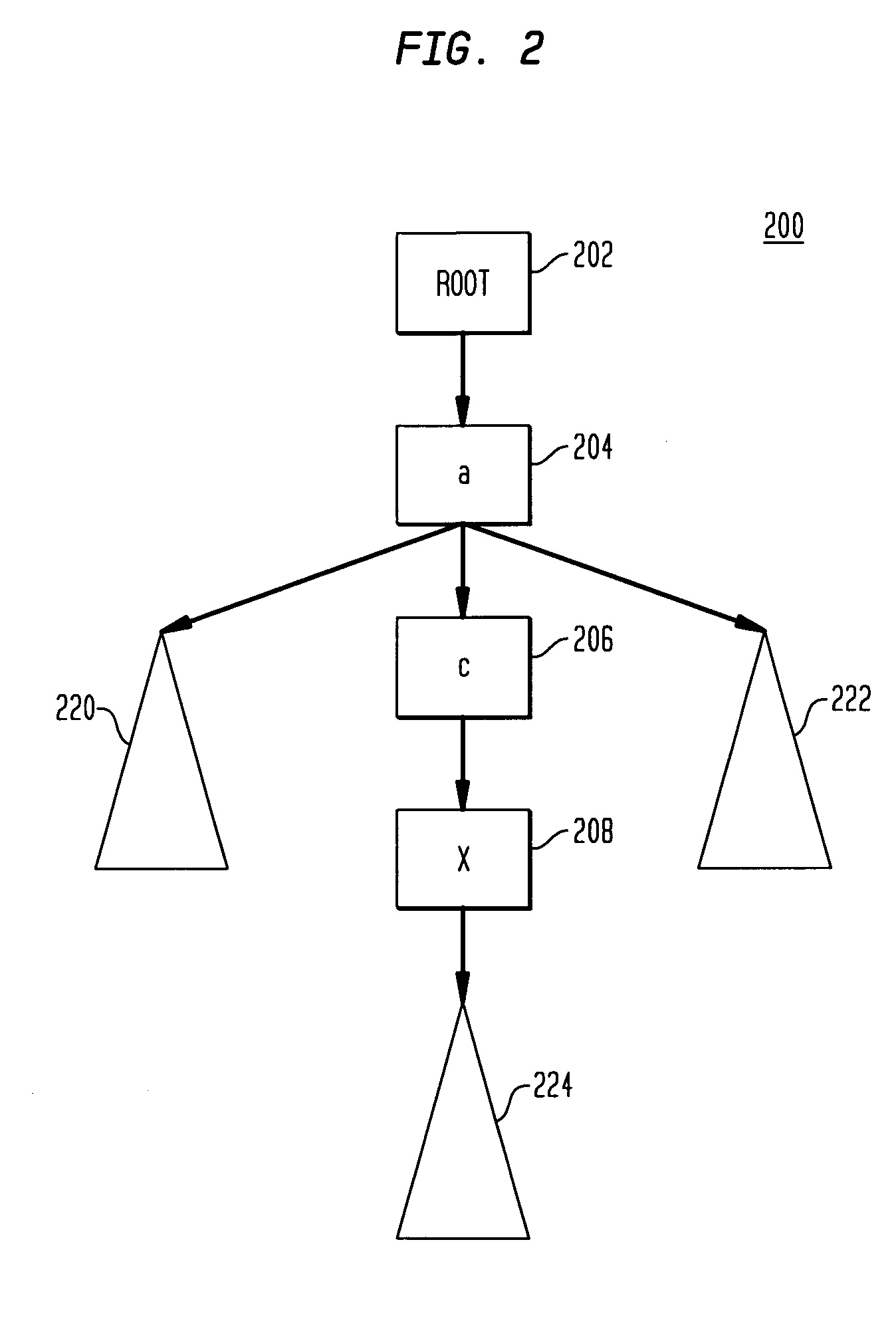Optimization of XPath expressions for evaluation upon streaming XML data
- Summary
- Abstract
- Description
- Claims
- Application Information
AI Technical Summary
Problems solved by technology
Method used
Image
Examples
Embodiment Construction
[0033] We discuss an algorithm which allows for the efficient evaluation of a fully expressive XPath expression with either or both forward and backward axes over streaming XML data. Efficiency is guaranteed by allowing at most one traversal of the streaming XML data. Additionally, the present invention allows for the transformation of a full XPath expression in to a state-less and forward-only form, allowing for the quick and easy evaluation of the transformed XPath expression over streaming XML data.
[0034]FIG. 2 illustrates a tree structure representation of a portion of an XML document. For simplicity, we focus on elements and ignore such items as attributes and text nodes. The tree 200 therefore, consists of the virtual root 202 and the elements of the document. To avoid confusion between the XML document tree 200 and a tree representation of the XPath, we use elements to refer to the nodes of the XML tree 200. The root 202 has a descendant 204 labeled “a” having two subtrees 2...
PUM
 Login to View More
Login to View More Abstract
Description
Claims
Application Information
 Login to View More
Login to View More - R&D Engineer
- R&D Manager
- IP Professional
- Industry Leading Data Capabilities
- Powerful AI technology
- Patent DNA Extraction
Browse by: Latest US Patents, China's latest patents, Technical Efficacy Thesaurus, Application Domain, Technology Topic, Popular Technical Reports.
© 2024 PatSnap. All rights reserved.Legal|Privacy policy|Modern Slavery Act Transparency Statement|Sitemap|About US| Contact US: help@patsnap.com










